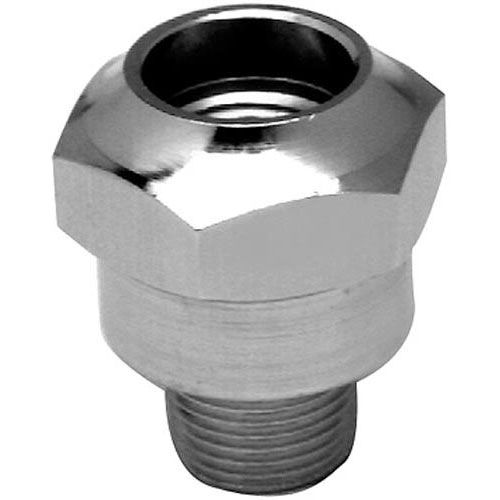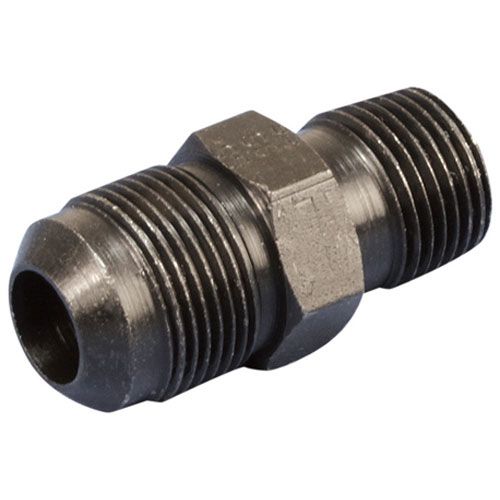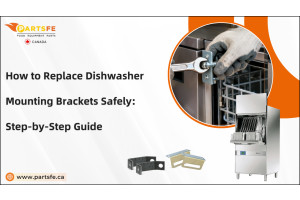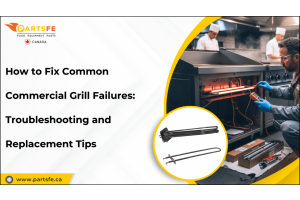From Farm to Table: The Role of Technology in Strengthening Food Safety Protocols
In today’s global food supply chain, ensuring food safety from farm to table has become more complex and more critical than ever before. As consumer demand for transparency, traceability, and high-quality food grows, technology plays a pivotal role in reinforcing safety protocols at every stage of production and distribution. From advanced sensors and blockchain tracking to AI-powered quality control and data analytics, innovative tools are transforming how food is monitored, processed, and delivered. These technologies not only help identify and mitigate risks early but also enhance regulatory compliance and consumer trust. This article explores the evolving landscape of food safety, highlighting how cutting-edge solutions are reshaping industry standards and safeguarding public health in an increasingly interconnected world.
The Importance of Food Safety in a Globalized Supply Chain and Why it Matters
In a globalized supply chain, food passes through multiple countries, handlers, and processes before reaching the consumer. This complexity increases the risk of contamination, mislabeling, and spoilage, making food safety a top priority. Even a small lapse at any stage—whether in production, transportation, processing, or packaging—can result in significant public health issues and financial losses.
Key Reasons Why Food Safety Matters:
-
Widespread Impact of Contamination: A single issue in one region can affect consumers worldwide due to interconnected supply networks.
-
Public Health Risks: Foodborne illnesses affect millions annually, causing severe health consequences and burdening healthcare systems.
-
Economic Consequences: Safety incidents can lead to product recalls, legal actions, and long-term damage to brand reputation.
-
Regulatory Compliance: Operating globally requires adherence to international food safety regulations.
-
Shared Responsibility: Ensuring safety requires collaboration among farmers, processors, regulators, and retailers.
-
Need for Transparency and Traceability: Clear protocols and digital tracking systems help identify and mitigate risks efficiently.
Strong food safety practices are not optional—they're essential for protecting consumers and supporting a resilient, trustworthy global food system.
Check this article about common restaurant issues and expert solutions that can help protect your business and customers.
Innovative Technologies Enhancing Food Safety Across the Entire Supply Chain
Food safety is a complex challenge that spans multiple stages, from production on the farm to consumption at the table. Innovative technologies are playing a crucial role in addressing these challenges by providing real-time monitoring, enhanced traceability, and improved quality control across the entire food supply chain.
Farming Level Innovations:
-
Drones and Internet of Things(IoT) sensors track environmental variables, soil quality, and crop conditions in real time.
-
Precision agriculture helps reduce harmful chemical use and detects contamination early.
Food Processing Advances:
-
AI-powered imaging and automated inspection systems identify contaminants, foreign objects, and spoilage faster and more reliably than manual inspections.
-
This improves quality control while minimizing human error.
Transportation and Storage Monitoring:
-
To maintain ideal conditions for perishables, IoT-enabled devices continuously monitor temperature, humidity, and other crucial elements.
-
Smart sensors send real-time alerts if conditions deviate from safety thresholds, preventing spoilage.
Blockchain for Traceability:
-
Make records of each stage in the food supply chain that are safe, clear, and unchangeable.
-
Facilitates rapid identification of contamination sources during recalls and builds consumer trust.
Retail and Consumer Technologies:
-
Customers may confirm the provenance, safety, and freshness of their food using QR codes and smartphone apps.
-
These tools promote informed purchasing decisions and boost confidence in food products.
Together, these technologies are creating a safer, more transparent, and more efficient food supply chain that benefits all stakeholders, from producers to consumers.
Read this article on predicting the future of restaurant technology in 2030, revealing innovations reshaping dining experiences.
Benefits of Technology-Driven Food Safety
Integrating modern technology into food safety protocols offers numerous advantages across the entire food supply chain. These developments boost operational performance, sustainability, and compliance in addition to food safety and quality.
Faster Detection and Response to Contamination
-
Real-time monitoring through AI and IoT allows early detection of pathogens or spoilage.
-
Rapid alerts enable immediate corrective action, limiting the spread of contamination.
-
Predictive analytics helps forecast potential risks before they occur.
-
Automated testing tools reduce the time needed for microbial analysis.
Enhanced Traceability and Transparency
-
Digital logs and blockchain monitor each stage of the supply chain.
-
Helps identify contamination sources quickly during recalls, reducing health risks and economic losses.
-
Digitized records ensure accountability at every checkpoint.
-
Consumers and regulators gain access to verified data for better decision-making.
Improved Regulatory Compliance
-
Automated systems maintain detailed records aligned with FDA, USDA, and global standards.
-
Lowers the possibility of fines, legal repercussions, and non-compliance.
-
Digital audits streamline inspections and reporting processes.
-
Ensures consistent application of HACCP and ISO standards.
Reduced Food Waste and Spoilage
-
Smart sensors monitor storage and transport conditions (e.g., temperature, humidity).
-
Helps prolong shelf life and preserve product quality.
-
Predictive maintenance alerts for refrigeration systems reduce equipment-related spoilage.
-
Real-time tracking allows quick rerouting of products facing potential quality loss.
Increased Consumer Trust and Engagement
-
QR codes and mobile apps provide transparency into product origins, certifications, and handling practices.
-
Uses accurate information to increase customer trust and loyalty.
-
Personalized alerts inform consumers about recalls or safety updates.
-
Enhanced labeling supported by tech fosters responsible consumption decisions.
Greater Operational Efficiency
-
Automation reduces manual labor, streamlines inspections, and accelerates processing.
-
Cuts operational costs while maintaining high safety standards.
-
AI-driven inventory systems reduce overstocking and understocking risks.
-
Integration with ERP systems improves logistics and workflow efficiency.
Support for Sustainable Food Systems
-
Data analytics guides sustainable practices in farming, packaging, and logistics.
-
Reduces the influence on the environment and waste of resources.
-
Overuse of pesticides, fertilizers, and water is decreased by precision farming.
-
Blockchain-enabled sourcing ensures ethical and environmentally responsible supply chains.
By leveraging these technological advancements, the food industry can address safety challenges more proactively, operate more sustainably, and deliver higher-quality products with greater consumer confidence.
Challenges in Implementing Food Safety Technology
While technology has the potential to revolutionize food safety across the supply chain, its adoption comes with several challenges. These obstacles can affect small farmers, large-scale producers, and even regulatory bodies, slowing the transition toward a fully tech-enabled food safety ecosystem.
High Implementation Costs
-
Advanced systems like AI-driven quality control, IoT sensors, and blockchain platforms require significant upfront investment.
-
Small and medium-sized enterprises (SMEs) may struggle to afford the infrastructure, tools, and skilled personnel needed for successful implementation.
Complexity of Technology and Integration Problems
-
It can be challenging to integrate several technologies at various supply chain phases.
-
Data silos and inefficiencies may result from outdated systems in processing plants or storage facilities that are incompatible with more recent technologies.
Lack of Technical Skills and Training
-
Employees at farms, factories, or distribution centers may lack the expertise to operate and maintain advanced food safety technologies.
-
Continuous training is essential but often overlooked or underfunded, especially in rural or developing regions.
Data Security and Privacy Concerns
-
Food safety technologies generate vast amounts of sensitive data, from production methods to supply chain logistics.
-
Although it can require a lot of resources, ensuring data security and compliance with laws like GDPR or HIPAA is essential.
Resistance to Change
-
Some businesses and stakeholders are hesitant to adopt new systems due to fear of disruption, cost, or a lack of proven ROI.
-
Cultural resistance within organizations can delay the adoption of even proven technologies.
Limited Infrastructure in Developing Regions
-
In many low-income areas, basic digital infrastructure like reliable internet access or electricity is still lacking.
-
This creates a digital divide, where only companies in developed regions benefit from technological advancements.
Regulatory and Standardization Gaps
-
There is still a lack of global standards for food safety technology implementation, especially for blockchain traceability and AI usage.
-
International food manufacturers find it challenging to implement a cohesive strategy due to disparate national legislation.
Building a more robust, open, and secure global food system will require addressing these problems.
Emerging Trends and Innovations Shaping the Future of Food Safety
The adoption of cutting-edge technologies and innovative ideas will be crucial to the future of food safety as the global food supply chain grows more intricate. These emerging trends aim to make food systems more resilient, transparent, and responsive to risks, ensuring that safety is maintained from farm to fork.
Artificial Intelligence and Predictive Analytics
AI helps food companies transition from reactive to proactive safety management.
-
Detects contamination patterns from large datasets (e.g., weather, equipment, and microbial data).
-
Predicts equipment failure or hygiene breaches before they impact food quality.
-
Optimizes cleaning schedules and resource allocation to prevent foodborne risks.
Next-Gen Blockchain Platforms
The evolution of blockchain is transforming food traceability and trust.
-
Facilitates real-time data sharing across manufacturers, regulators, and retailers.
-
Enables more secure, transparent records of every transaction in the supply chain.
-
Supports interoperability across platforms to standardize tracking globally.
Smart Packaging with Embedded Sensors
Packaging is becoming intelligent, offering real-time food status updates.
-
Monitors temperature, pH levels, and gas emissions to detect spoilage.
-
Sends alerts when conditions exceed safety thresholds during storage or transport.
-
Enhances consumer confidence with visual freshness indicators on the package.
Digital Twins and Simulation Technologies
Virtual replicas improve safety through advanced testing and planning.
-
Simulates contamination events to test response strategies without real-world risks.
-
Identifies potential safety bottlenecks before they happen in physical facilities.
-
Helps design safer, more efficient production environments using digital insights.
DNA-Based Pathogen Detection
Genomic tools are revolutionizing how foodborne pathogens are identified.
-
Detects pathogens like “Listeria, E. coli, or Salmonella” at the genetic level.
-
Provides results in minutes instead of days, accelerating recalls and corrective actions.
-
Reduces the need for culturing samples, saving time and lab resources.
Edge Computing for Instant Decision-Making
Edge computing ensures critical decisions happen in real time.
-
Processes data directly on local devices, reducing reliance on cloud infrastructure.
-
Enables smart cold storage units to auto-adjust temperature or humidity in transit.
-
Critical in remote or mobile environments with unreliable connectivity.
Robotics and Automation in Sanitation
Robotic systems enhance hygiene while reducing contamination risks.
-
Performs repetitive, high-risk tasks like cleaning and sorting with precision.
-
Reduces human contact with raw food materials, limiting contamination.
-
Operates consistently in regulated environments, improving compliance.
Sustainable and Transparent Supply Chains
Sustainability is becoming a pillar of food safety innovation.
-
Tracks environmental impact (e.g., water usage, emissions) for each product.
-
Verifies ethical sourcing and animal welfare compliance through digital audits.
-
Enhances brand integrity and aligns food safety with corporate responsibility goals.
Technology is revolutionizing the way food safety is managed across the global supply chain—from precision farming and AI-driven inspections to blockchain traceability and smart packaging. The advantages of improved safety, efficiency, sustainability, and consumer trust greatly exceed the drawbacks, even when issues like high implementation costs and infrastructural gaps still exist. As emerging innovations continue to evolve, their integration will be essential in building a safer, smarter, and more resilient food ecosystem. For stakeholders across the industry, embracing these advancements is not just a strategic move—it's a necessary step toward ensuring public health and maintaining the integrity of the global food supply.
Looking to upgrade your food safety game with reliable equipment and trusted brands? PartsFe CA offers a wide range of commercial kitchen parts like temperature sensors, refrigeration gaskets, and evaporator coils, from top brands such as Hobart, Hoshizaki, and Manitowoc. Shop with confidence and keep your kitchen compliant, efficient, and food-safe from farm to table.
FAQs
What role does traceability play in food safety?
Traceability systems, utilizing technologies like blockchain, RFID, and barcoding, allow stakeholders to track food products from their origin to the consumer. This transparency helps quickly identify and remove contaminated products during recalls, enhancing food safety and consumer trust.
How are smart packaging solutions improving food safety?
Innovative smart packaging systems, such as battery-free and stretchable packaging, incorporate sensors to monitor the freshness of food products. These systems can detect spoilage and release active compounds to extend shelf life, ensuring that consumers receive safe and high-quality products
What role does AI play in modern food safety systems?
AI helps predict potential contamination risks, optimize quality control processes, and automate inspections to ensure higher accuracy and faster responses to food safety threats.











